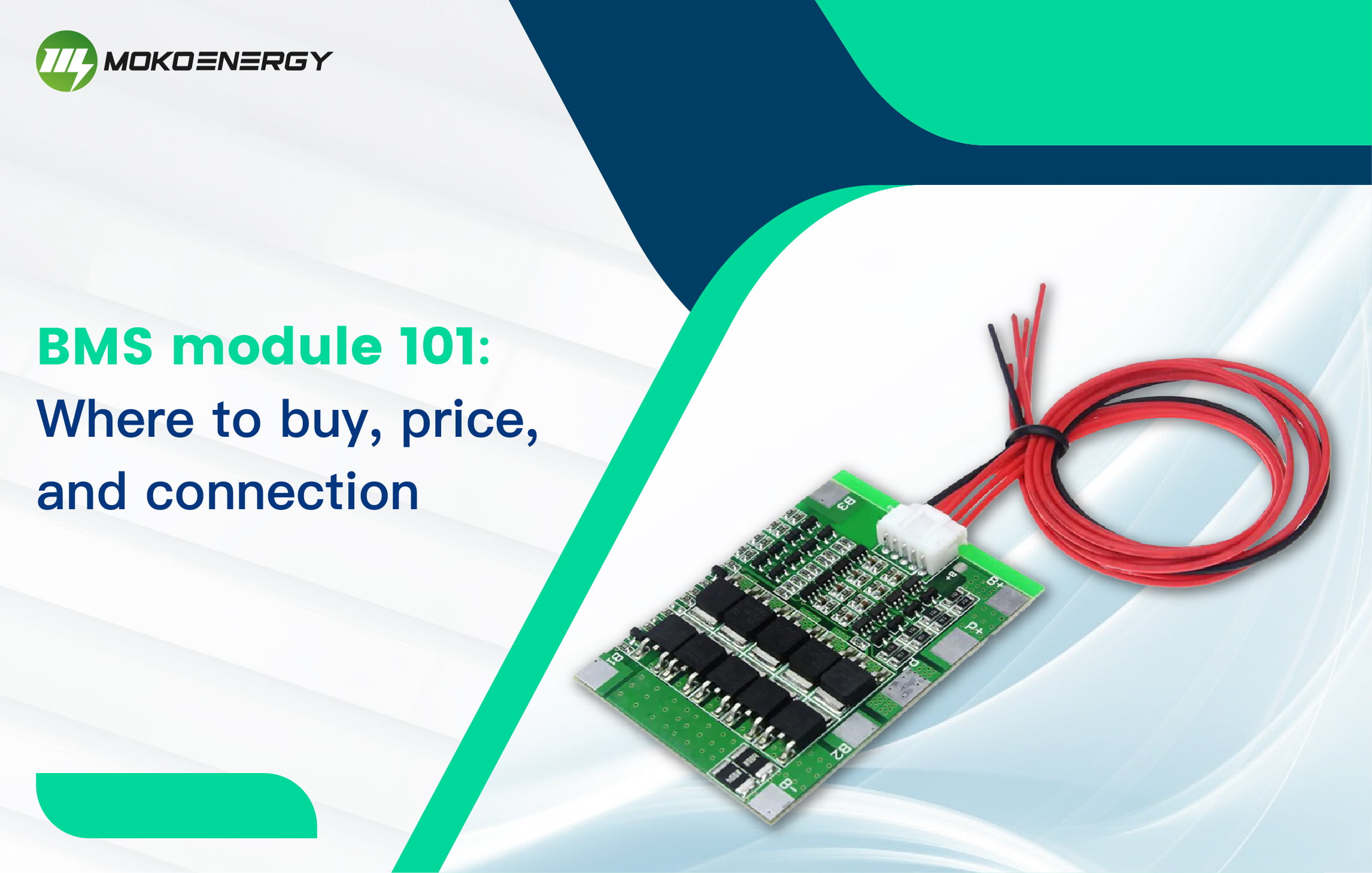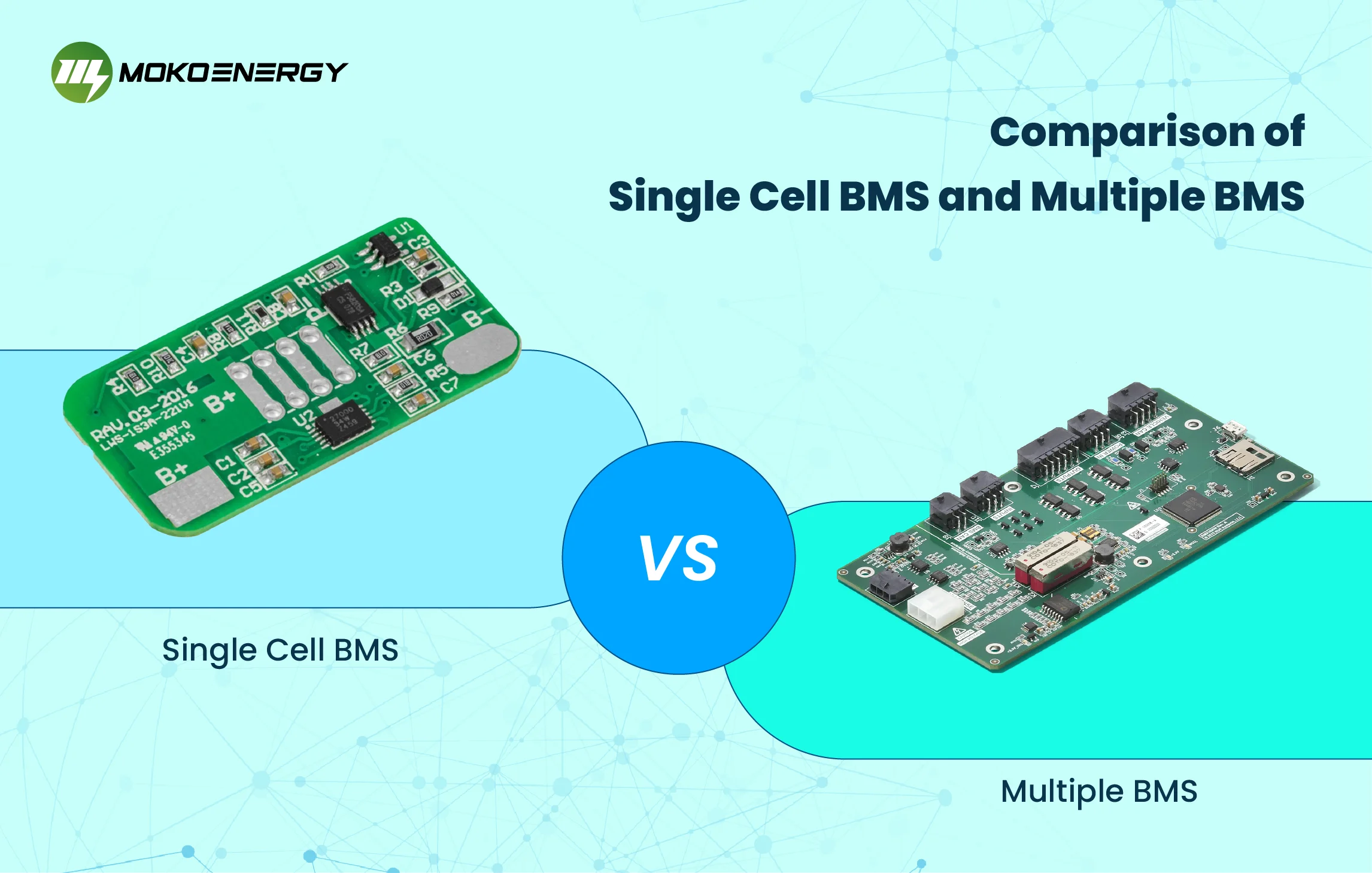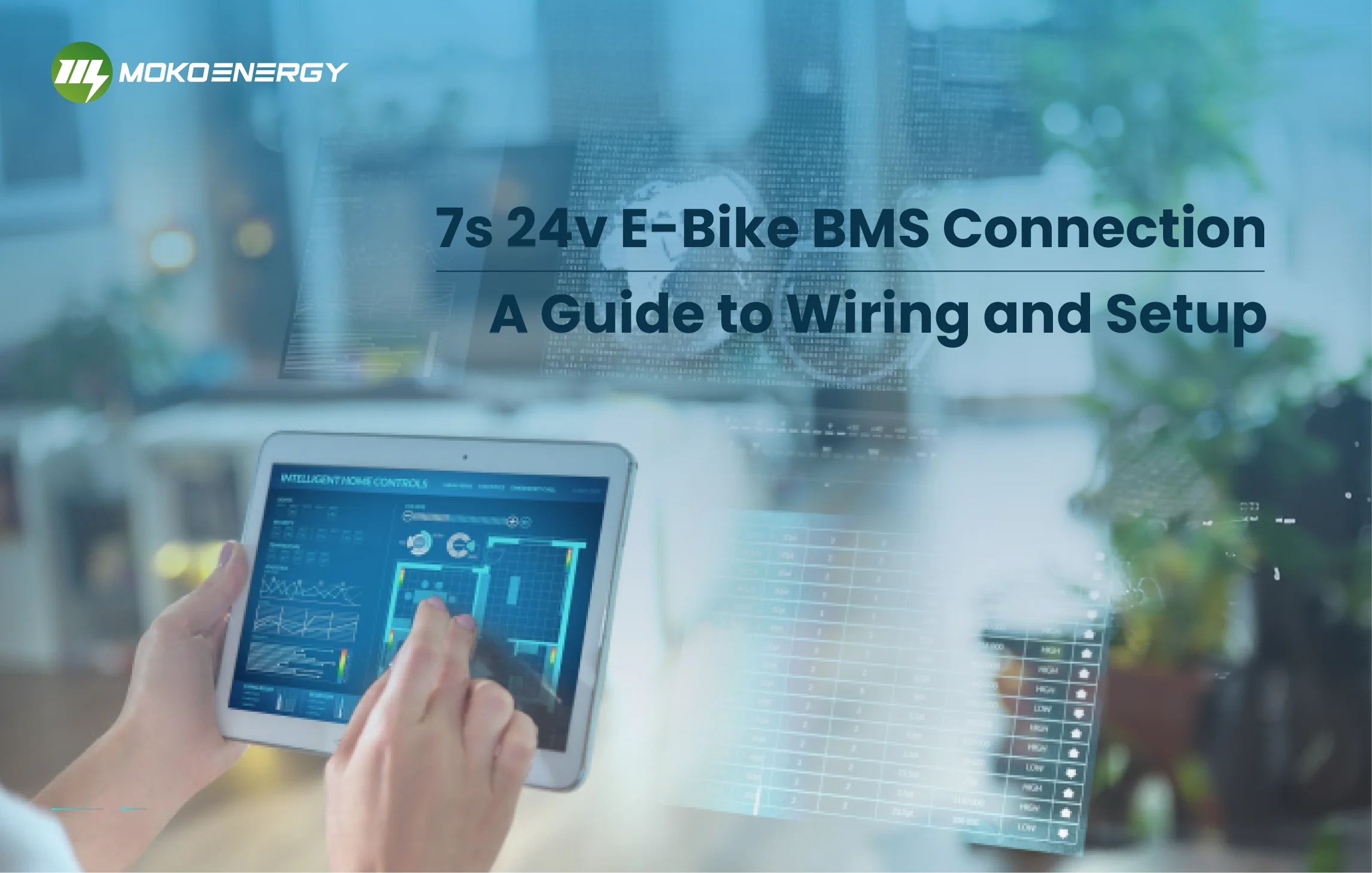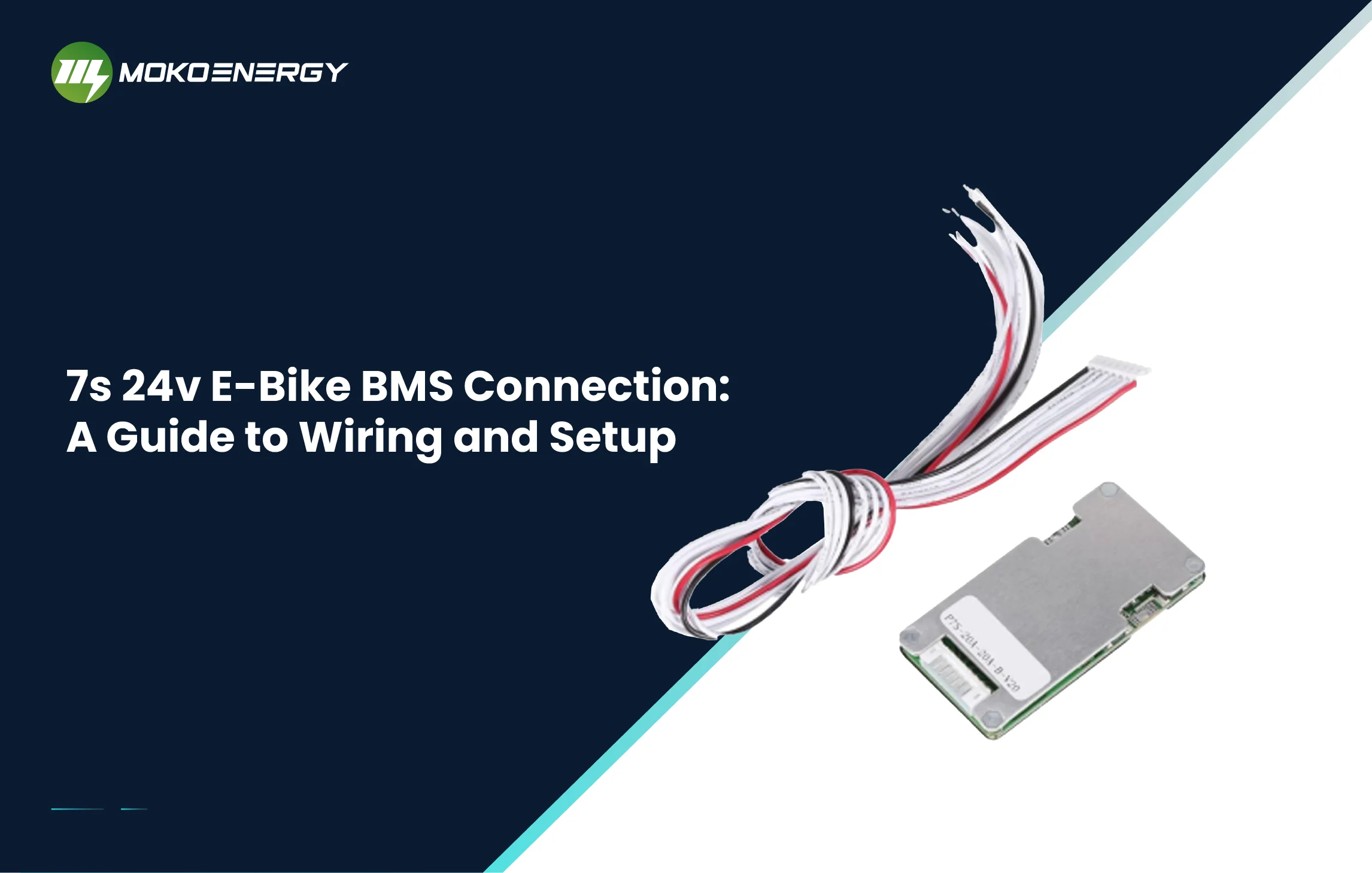As the new energy market is widely developing around the world, Battery Management Systems (BMS) which refer to an electronic system used to oversee the operations of a rechargeable battery get advanced and become more sophisticated. Especially, BMS module occupies a crucial place in the manufacture of BMS, so what is BMS Module and what are its types, how about its price and what can Mokoenergy offer you? Next we will give you an answer.
What is BMS Module?
A BMS is composed of multiple individual modules and the route connecting those modules. Woring together in BMS, modules monitor and manage the battery’s health, performance, and safety, therefore, the use of BMS module plays an important role in the whole BMS systems.
A BMS Module mainly includes controller, sensors, thermal management, communication interfaces, actuators, and state estimation algorithms, those components work together to form a BMS module and exert great influence on systems.
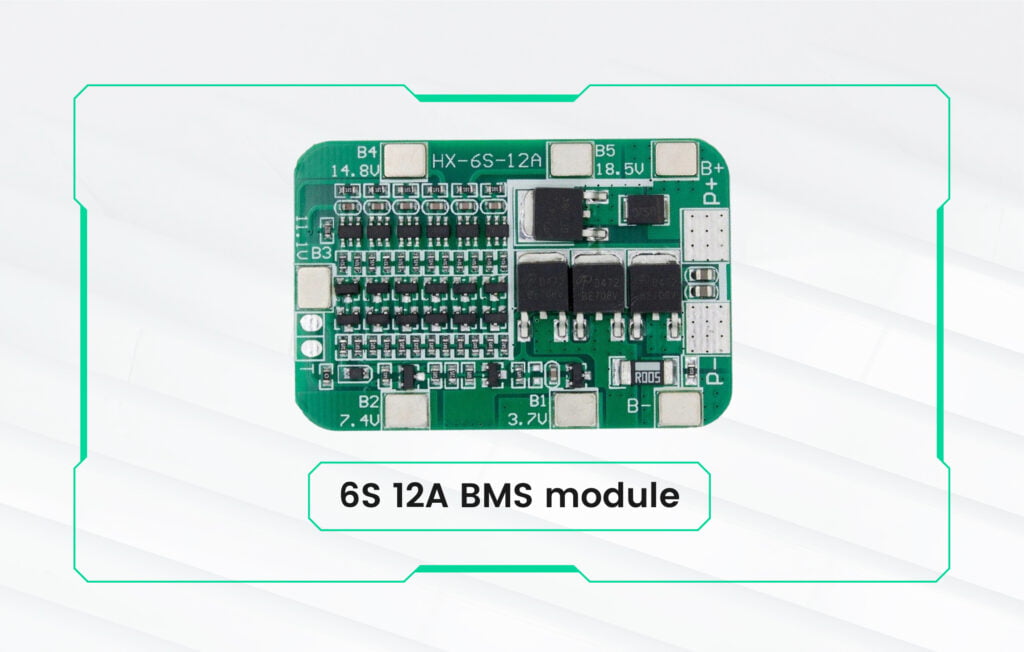
Types of BMS Module
According to different functions of BMS, BMS Modules could be divided into three types——inputs module, outputs module, and inputs-outputs module, the next is detailed introduction about these three types.
Inputs Module
The inputs module, not affected by the controller, is a device that gathers data from all kinds of sources like temperature sensors and transmits those signals to the BMS controller for analysis and monitoring, so that the controller can get the real-time condition of batteries and optimize their usage, ensuring batteries’ safety and security. It has two types, one is digital inputs module, and the other is analog inputs module.
- The digital inputs module is the device that is capable of receiving binary signals from sensors or devices, it has typical states and can be read by the controller and its state is either true or false, on or off, open or closed.
- The analog inputs module serves as an interface between BMS and various sensors. Unlike the digital inputs module which will show the precise state of off or on, the analog inputs module will provide continuous and variable data (especially current and voltage) from devices.
Outputs Module
The outputs module, affected by the controller, is a device that can control various devices under the commands of the central BMS controller. Based on those signals transmitted from other devices, the outputs module will operate or not according to the controller’s commands, influencing the operation of other systems and benefiting the performance and lifespan of batteries. It also has two types——digital outputs module and analog outputs module.
- The digital outputs module is a device that can be used to control anything that has binary signals, particularly representing on or off, true or false, open or closed states.
- The analog outputs module is a device that can translate control commands from the controller into various signals and flexibly control other devices.
Inputs-Outputs Module
Inputs-outputs module combines functions of both the inputs module and the outputs module and serves as a versatile interface between the BMS controller and various devices, so it can deal with all kinds of signals, whether it is digital or analog, inputs or outputs.

Using inputs and outputs modules to remotely monitor input state or control devices based on input state can flexibly promote the communication between the BMS controller and various sensors and devices, which is good for BMS to monitor the state of the battery, regulate various parameters, and optimize battery usage as well as enhance efficiency and performance.
Features of Mokoenergy’s BMS Module
There are eight major features of BMS module.
- Voltage Protection(Overvoltage Protection and Undevoltage Protection): This feature ensures battery’s safety and protection. Mokoenergy’s BMS module could effectively safeguard the battery from damage caused by unusual voltage, rising up or falling down the voltage limit.
- Short Circuit Detection: Our BMS module can make a detection when there is a short circuit and provide solutions, ensuring electrical safety in different applications.
- Cell Voltage Monitoring: Monitoring the state of cell voltage could get the condition of battery packs, preventing imbalance of batteries and ensuring optimal performance ad safety.
- State-of-Charge Estimation: This feature of our BMS module could estimate the state of the battery, no matter whether it is on charge or not, preventing undercharging, overcharging, or imbalance between cells.
- Thermal Management: Controlling temperature when it is overheating or overcooling to optimize the performance of the battery and ensure safety in case of fire.
- Fault Diagnosis: According to different conditions and applications, it will identify problems in systems, generate alarms if necessary, and provide feasible repairs for batteries.
- State-of-Health Estimation: Estimating current condition or state of certain component or battery and providing continuous monitoring and feedback to maximize efficiency and reliability and minimize potential risks.
- Communication Interface: An effective method to ensure effective transition and exchange of signals and information between different devices, modules, and other components.
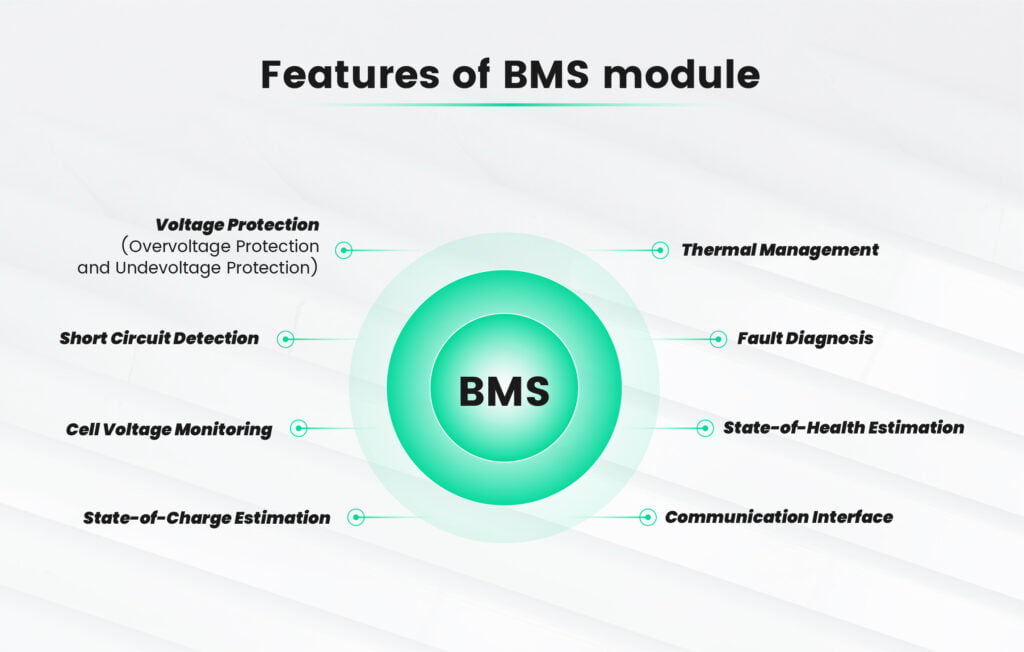
With the above eight features, BMS module could effectively monitor, detect, and protect batteries, optimizing batteries’ systems and improving their performance and efficiency.
The Applications of Mokoenergy’s BMS Modules
The BMS modules are widely used in different fields.
- Electric Vehicles: Mokoenergy mainly services light EVs like e-scooters, e-bikes, golf cars, and we also offer services to automotive vehicles, such as private electric cars, e-bus, e-trunk, and other kinds of vehicles.
- Energy Storage(residential, commercial, grid-scale): Mokoenergy provides various types of energy storage BMS modules, such as home energy storage, telecom base station, solar storage system, smart grid.
- Public Utilities: Mokoenergy also offers BMS module to public utilities like street lights and temperature control balanced lamps.
- Private Electronics: Mokoenergy produces BMS modules for customers’handphones, laptops, electronic toys, and other electronics.
- Power Tools: the BMS module of Mokoenergy could be used in almost all kinds of power tools, such as cordless drills, electric screwdrivers, chainsaws and so on.
- Industrial Applications: Mokoenergy’s BMS module could be used in the production of robots, AGVs.
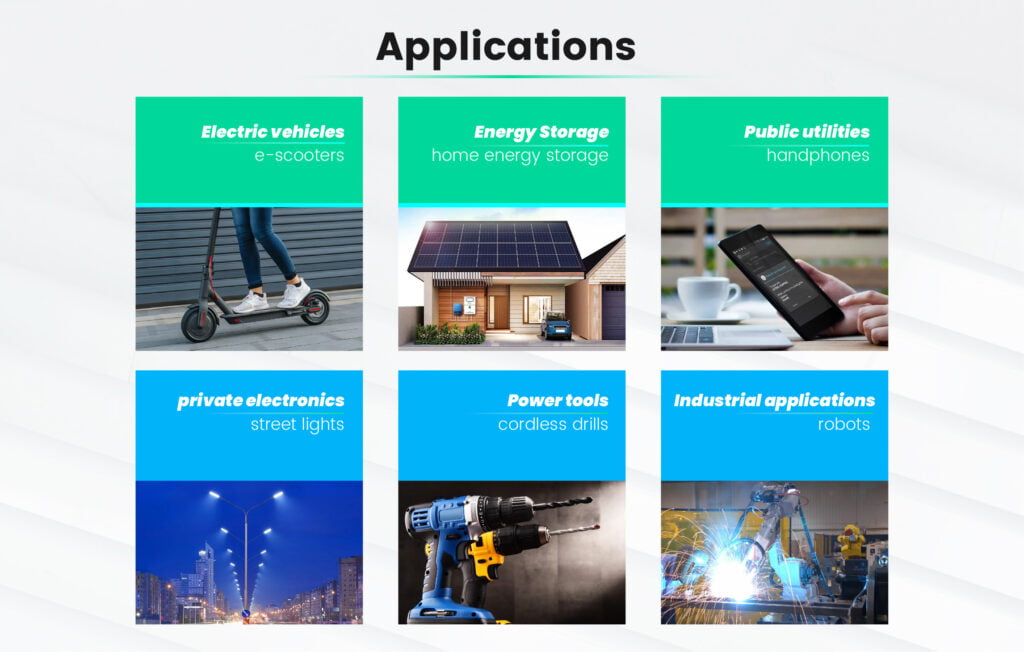
As you can see, Mokoenergy’s BMS modules are widely used in various fields, and it robustly indicates that we have mastered mature technology and guaranteed sound quality of our BMS products.
The Price of BMS Modules
Mokoenergy’s BMS module price is variable as we offer customization and other various services for our customers, and next is a price reference of our BMS modules.
| BMS Modules | Price |
| 10-20V 3-5S 20-40A BMS Lithium Battery Protection Circuit Board | US $5.29-11.29 |
| 12-72V 3-20S 20-100A BMS Lithium Battery Protection Circuit Board | US $6.35-20.35 |
| 36-72V 10-20S 40-200A BMS Lithium Battery Protection Circuit Board | US $25.99 – 49.99 |
| 12-48V 3-16S 60-500A BMS Lithium Battery Protection Circuit Board | US $35.99-85.99 |
Customers can propose their requirements or assign certain type of module, we will produce modules in accordance with their needs.
How to Connect a BMS Module to a Battery Pack
BMS module connection or connecting a BMS Module to a battery pack which refers to a collection of individual batteries used to offer a desired voltage, capacity, and current output needs several steps.
- Choosing Correct BMS module and battery packs: the use of BMS depends on how many battery packs have, for example, if there is a 6S BMS, it cannot be used for any other number of batteries than 6 batteries, except for 6S 2P or 6S 3P batteries. Moreover, we have to make sure the BMS can undertake the maximum current and voltage of batteries.
- Disconnecting Power: for safety, we should make sure there are no power sources connected to the batteries.
- Connecting BMS Module and Battery Packs: 1) the zero volt(B-) should be connected to the negative terminal of the first battery, and the positive and negative terminal of adjacent batteries have been connected by leads, 2) so soldering the connection between the positive terminal of first battery and the negative terminal of second battery to B1 of BMS with leads and we can get voltage of first cell, 3) then soldering the second connection to B2 of BMS and repeating the operation, 4) lastly connecting the positive terminal of last battery to B+ of BMS, then the connection is finished.
- Connecting Load or Charger: connecting the plus(P+) and minus(P-) of BMS to the positive and negative terminal of the load or that of the charge.
- Attaching BMS to Battery Pack: this step is to ensure BMS would not move around and cause a short circuit of batteries.
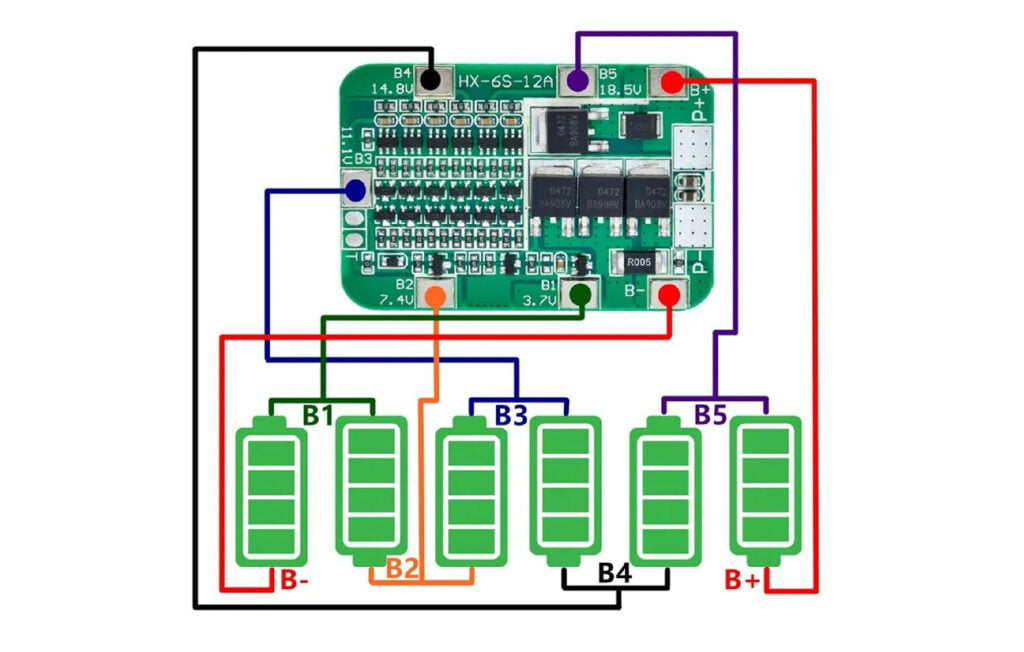
Following the above steps, we could successfully connect a BMS module to a battery pack, and we could get cell voltage and test the balancing capacity of BMS.
Conclusion
As a professional BMS manufacturer, we offer various products with guaranteed quality and sound services for different customers. After learning about BMS modules and its types as well as our serviced applications, please contact us if you have any questions or needs.
Learn More:

